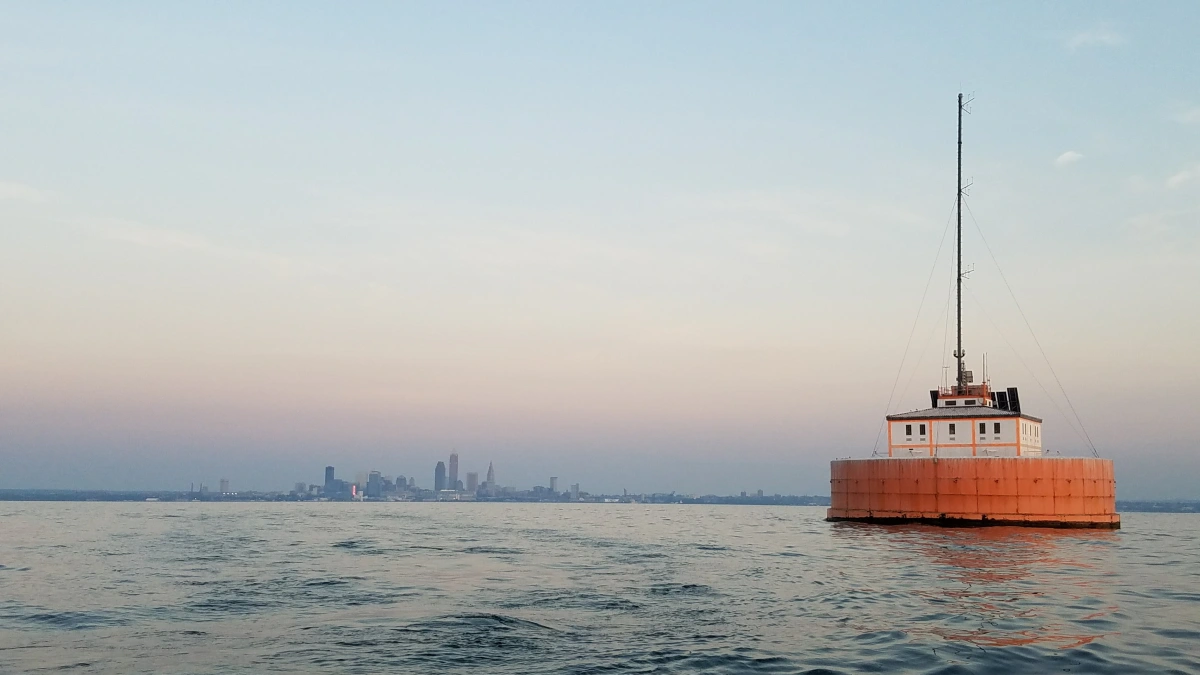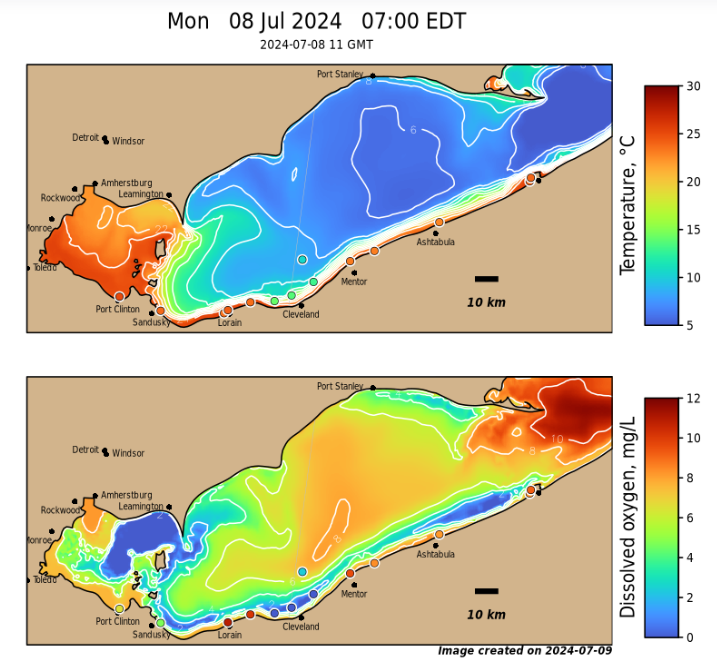
Lake Erie now benefits from an advanced hypoxia forecast model, designed to help water treatment plants manage water quality more effectively. This new tool provides real-time predictions of dissolved oxygen levels, giving treatment facilities the information they need to adapt their processes and ensure safe, high-quality drinking water.
Lake Erie’s central basin, a vital drinking water source for over two million people along the Ohio coast, faces significant challenges during the summer. The lake stratifies, creating a distinct separation between warm surface water and cold, dense bottom water. The deep water often becomes hypoxic (low in dissolved oxygen) and has a low pH and elevated levels of iron and manganese. These differences necessitate frequent adjustments in water treatment processes. Incorrect treatment can lead to pipe corrosion, unpleasant taste, bad odor, and discoloration of the water.
Strong wind events can cause upwelling, bringing this cold, hypoxic bottom water to the surface nearshore. Low oxygen water interferes with the standard treatment of drinking water. If an upwelling of hypoxia reaches a drinking water intake, the treatment process needs to be adjusted to maintain drinking water standards. The hypoxia forecast model provides advance warnings of these events, enabling water managers to respond promptly and effectively.
The advanced hypoxia forecast model is part of a comprehensive effort to address these challenges. Integrated with a real-time, fine-scale hydrodynamic model, the forecast provides advance warnings of lake circulation events that are likely to affect raw water quality. This coupled system allows drinking water managers to prepare for conditions that promote hypoxic water movement into the vicinity of water intakes.

The model includes a physically based component that simulates exchange of oxygen with the atmosphere, three dimensional transport of oxygen, and consumption of oxygen in the water column and by the sediment. This comprehensive approach offers real-time, actionable insights by providing timely warnings of conditions that may cause upwelling events. The hypoxia forecast model helps local decision-makers manage water treatment more effectively, preventing the adverse effects of improper treatment. This ensures the delivery of safe, high-quality drinking water, reduces maintenance costs, and protects public health.
The development and implementation of the hypoxia forecast model are the result of a collaborative, NCCOS-funded effort that began in 2017, involving the NOAA Great Lakes Environmental Research Laboratory (GLERL), the U.S. Geological Survey, the Cooperative Institute for Great Lakes Research, the City of Cleveland Division of Water, and Purdue University. This partnership has been instrumental in bringing the forecast from concept to reality.
From 2017-2021, GLERL and the Cooperative Institute for Great Lakes Research developed an experimental Lake Erie hypoxia forecast under a project funded by the NCCOS Coastal Hypoxia Research Program. The experimental forecast became publicly available on NOAA GLERL’s website in 2018, and was used by public water systems, as well as fisheries managers. NOAA GLERL produced the Lake Erie hypoxia forecast each summer through 2023, prior to transitioning it to NCCOS for sustained operations.
The model is integrated into the Lake Erie Forecast System, further enhancing the region’s capability to manage water quality. Click here for more information and to access the forecast.
